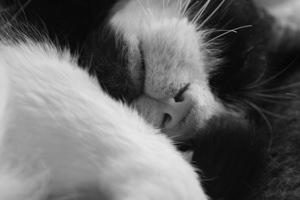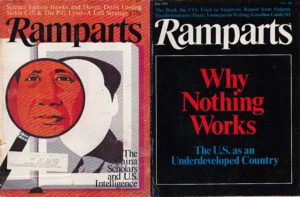The Great Kitty Cull of WWII
When we think of the Second World War, of course the immense human devastation and suffering comes to mind. And yet, a widely forgotten fact is that domestic animals were some of the first British victims of the brutal conflict.
When we think of the Second World War, of course the immense human devastation and suffering comes to mind. And yet, a widely forgotten fact is that domestic animals were some of the first British victims of the brutal conflict. Right before the war broke out officially in 1939, the National Air Raid Precautions Animals Committee published a widespread warning titled “Advice to Animal Owners.” In short, the pamphlet encouraged pet owners to send their animals away, leave them in the hands of trustworthy neighbors, or “have them destroyed.” The BBC recounts what became a “national tragedy in the making,” according to the author of “Bonzo’s War: Animals Under Fire 1939-1945,” Clare Campbell:
The advice was printed in almost every newspaper and announced on the BBC….After war was declared on 3 September 1939, pet owners thronged to vets’ surgeries and animal homes.
“Animal charities, the PDSA, the RSPCA and vets were all opposed to the killing of pets and very concerned about people just dumping animals on their doorsteps at the start of the war,” says historian Hilda Kean.
Battersea Dogs and Cats Home opened its doors in 1860 and survived both wars. “Many people contacted us after the outbreak of war to ask us to euthanise their pets – either because they were going off to war, they were bombed, or they could no longer afford to keep them during rationing,” a spokesman says.
“Battersea actually advised against taking such drastic measures and our then manager Edward Healey-Tutt wrote to people asking them not to be too hasty.”
But Campbell cites an Arthur Moss of the RSPCA who, “gloomily pronounced that the primary task for them all would be the destruction of animals”.
In the first few days of war, PDSA hospitals and dispensaries were overwhelmed by owners bringing their pets for destruction. PDSA founder Maria Dickin reported: “Our technical officers called upon to perform this unhappy duty will never forget the tragedy of those days.”
…The first bombing of London in September 1940 prompted more pet owners to rush to have their pets destroyed.
Many people panicked, but others tried to restore calm. “Putting your pets to sleep is a very tragic decision. Do not take it before it is absolutely necessary,” urged Susan Day in the Daily Mirror.
But the government pamphlet had sowed a powerful seed.
“People were basically told to kill their pets and they did. They killed 750,000 of them in the space of a week – it was a real tragedy, a complete disaster,” says Christy Campbell, who helped write Bonzo’s War.
Historian Hilda Kean says that it was just another way of signifying that war had begun. “It was one of things people had to do when the news came – evacuate the children, put up the blackout curtains, kill the cat.”
It was the lack of food, not bombs, that posed the biggest threat to wartime pets. There was no food ration for cats and dogs.
Some animals were saved from the massacre, especially dogs who were “needed for the war effort.” Incredibly, with only four people working at the Battersea home, they somehow took care of 145,000 dogs throughout World War II. But many other pets were not as lucky as these canines, and met a gruesome end before the war was even truly underway.
Their deaths, however, were met with much remorse and shame. Many guilt-ridden pet owners wrote “In Memoriam” pieces for local newspapers, asking for their pets’ forgiveness and to this day it is a much repressed episode in a country known for its animal lovers.
—Posted by Natasha Hakimi
Your support matters…Independent journalism is under threat and overshadowed by heavily funded mainstream media.
You can help level the playing field. Become a member.
Your tax-deductible contribution keeps us digging beneath the headlines to give you thought-provoking, investigative reporting and analysis that unearths what's really happening- without compromise.
Give today to support our courageous, independent journalists.





You need to be a supporter to comment.
There are currently no responses to this article.
Be the first to respond.